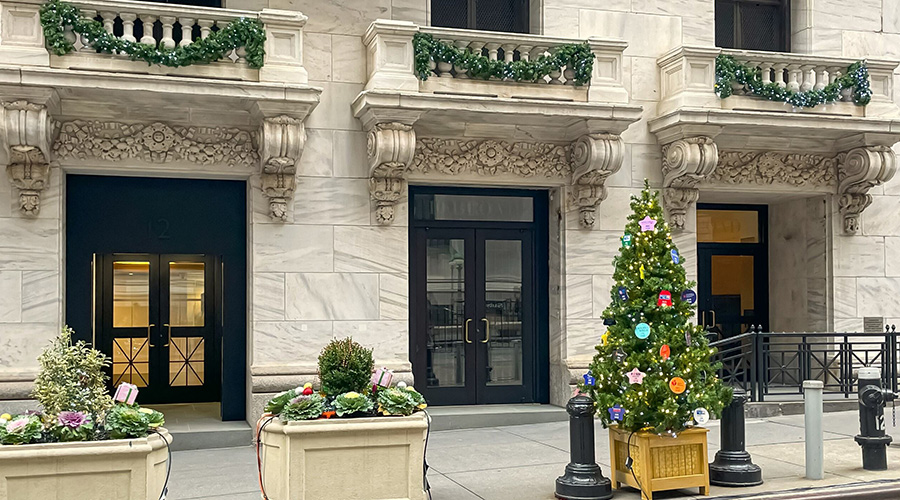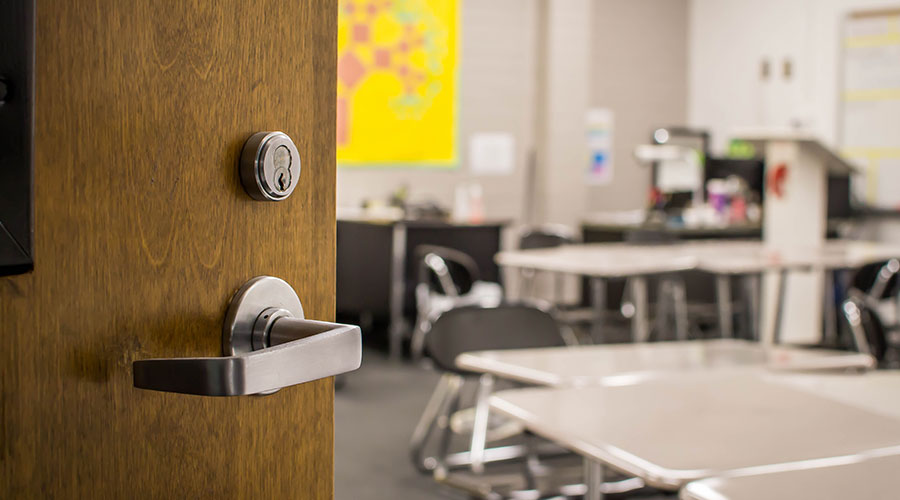Door Selection Process Starts With Needs Assessment
The door selection process starts with a needs assessment for each area within the building. Start by identifying important factors related to the particular application, including life-safety, emergency egress, loss prevention, and protection of building occupants. Do not assume that because a selection meets the requirements of one factor, that it also meets the requirements of another factor. Each must be examined separately with respect to the application.
Each factor may require multiple levels of analysis. For example, there are two different aspects of loss prevention that must be considered: losses that are the result of people from outside of the facility gaining access to unauthorized areas inside, and losses due to the actions of building occupants who are in authorized areas. In order to meet the requirements of the application, both must be examined separately and in the context of the type of protection required.
The next issue that must be examined is the durability requirements of the application. What level of traffic will be passing through the door on a typical day? What level of abuse can be expected in that location? No matter how well the door is designed and installed, it will not live up to performance expectations if its durability does not match the application requirements.
Door Hardware Standards
Door hardware standards have been developed by the Builders Hardware Manufacturers Association. Using procedures established by the American National Standards Institute, the standards identify the number of opening and closing cycles that door and door hardware can be expected to withstand. For example, Grade 1 hardware, the highest rated grade, requires that it be able to operate reliably through half a million cycles.
As can be expected, the higher the grade of the door component, the higher its initial cost. In most cases, upgrading from a Grade 2 to a Grade 1 component increases the first cost by between 25 percent and 50 percent. That's significant, but facility managers should bear in mind that the upgrade can extend the service life by a factor of three.
Another important step is to identify the level of security that must be provided by the door. Increased security concerns have focused attention on doors and building security, but not all applications will require the same level of protection. Remember, the greater the level of security provided by the installation, the more likely it is that the application will impede or at least slow the flow of traffic. Therefore it is crucial to match the level of security to the requirements of the application.
Facility managers should also determine what it is that is being protected by the application. Is the installation trying to keep unauthorized people out of a particular area, or is it trying to keep equipment and inventory in? Is the primary purpose of the installation to protect people or to protect things? How likely is a security breach at that location? What are the consequences of a security breach?
Security can be enhanced by monitoring the doors from a central location. These systems typically monitor and record door activity, track when particular areas were accessed by individuals, and allow facility managers to lock and unlock doors remotely as needed or according to a set schedule. If a centralized system is being considered, facility managers must ensure that all door hardware components are compatible with the system. Because the systems do increase the cost of the installation significantly, make certain that central monitoring and operation of the doors is really needed.
Related Topics:














